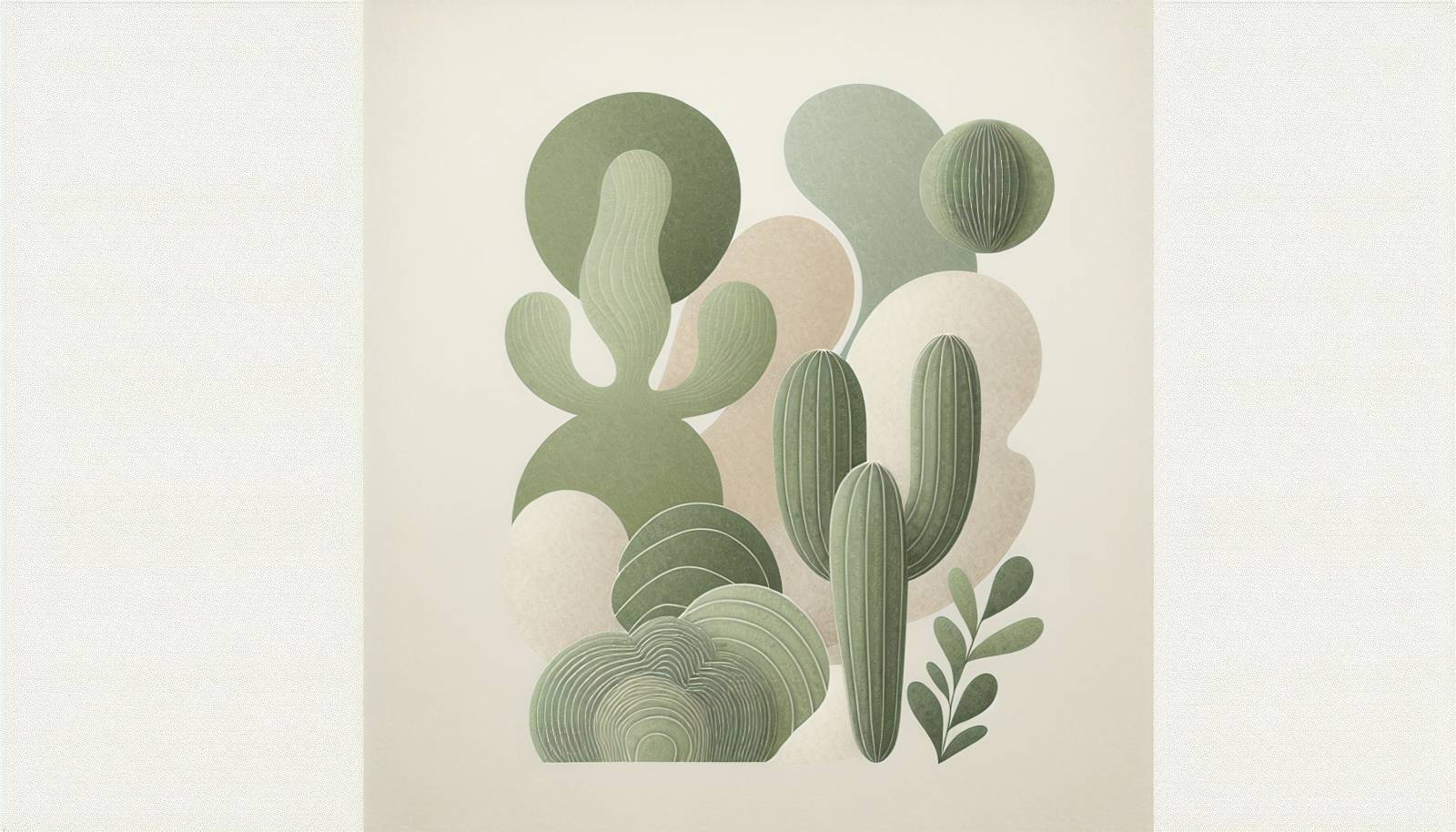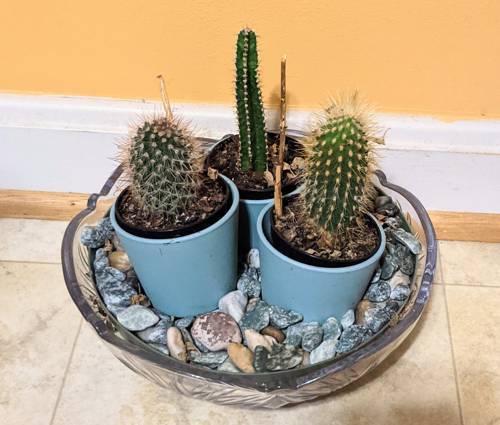
FAQ About Indoor Cacti and Succulent Arrangements

What are the benefits of having indoor cacti and succulent arrangements?
Indoor cacti and succulent arrangements add aesthetic appeal to any space with their unique shapes and textures. They are low-maintenance plants, ideal for individuals with busy lifestyles or those new to gardening. Cacti and succulents are excellent for improving air quality as they release oxygen and absorb carbon dioxide during the day.

How do I select the right container for my cactus and succulent arrangement?
Select a container with drainage holes to allow excess water to escape, preventing root rot. The size should accommodate the current plant sizes with room for growth. Materials like terracotta and ceramic are ideal as they are breathable, promoting healthy roots.

What soil mix should I use for indoor cacti and succulents?
Use a well-draining soil mix specifically formulated for cacti and succulents. These mixes typically contain sand, perlite, and small gravel to mimic their natural arid environment, preventing water retention.

How often should I water my indoor cacti and succulents?
Watering should be done once the soil is completely dry. Typically, this means watering every 2–4 weeks, but this can vary based on environmental conditions such as temperature and humidity. Overwatering can lead to root rot, so it's better to underwater than overwater.

What are some good companion plants for cacti in an arrangement?
Good companion plants for cacti include other succulents like jade plants, echeveria, and sedum. These plants share similar light and water needs, making them compatible partners in an arrangement.

How much sunlight do indoor succulents and cacti require?
Most cacti and succulents require bright, indirect sunlight for at least 4-6 hours a day. Position them near a south or east-facing window for the best results. Too much direct sunlight can cause sunburn, while too little can lead to stretching and weak growth.

Can I grow succulents and cacti under artificial lights?
Yes, you can grow them under artificial lights if natural sunlight isn't sufficient. Use grow lights that provide full-spectrum light, mimicking natural sunlight, and place them a few inches above the plants for 12-16 hours a day.

What are some common pests that affect indoor succulents and cacti?
Common pests include mealybugs, spider mites, and aphids. Regularly inspect your plants and if you find pests, remove them manually or use an insecticidal soap or neem oil to treat infestations.

How do I propagate cacti and succulents in my arrangement?
Most succulents can be propagated from leaves or cuttings. Gently twist a leaf off the plant and let it dry until the end calluses over, then place it on soil. Cacti can be propagated using cuttings by allowing them to dry and form calluses before planting.

Can I fertilize my indoor succulents and cacti?
Fertilize sparingly with a diluted cactus or succulent fertilizer during the growing season (spring and summer). Over-fertilizing can harm the plants, so it's best to err on the side of less.

Do I need to rotate my cacti and succulents?
Yes, rotating your plants every few weeks ensures even growth and prevents them from leaning towards the light source. This is especially important in low-light situations to avoid uneven growth patterns.

How can I create a balanced aesthetic in my cacti and succulent arrangement?
Achieve balance by mixing varying heights, textures, and colors. Use taller cacti as focal points, and spread out rosette-shaped succulents or trailing varieties for contrast. Consider the visual weight and symmetry when arranging your plants.

Are there any safety considerations when handling cacti?
Cacti have spines that can cause injury if not handled carefully. Use gloves or a soft cloth to protect your hands when planting or moving them. Be mindful of placement to avoid accidental bumps.

What should I do if my succulent is losing its leaves?
Leaf drop in succulents can result from overwatering, insufficient light, or stress. Evaluate these conditions and adjust care as necessary. Overwatered plants should be allowed to dry out, and those in low light should be repositioned.

How can I deal with root rot in succulents and cacti?
To address root rot, remove the plant from its container and cut away any rotten roots. Repot with fresh, dry soil and reduce watering frequency. Ensure the new pot has adequate drainage.

Can I use decorative pebbles in my succulent arrangement?
Yes, decorative pebbles can be used on the soil surface to enhance the arrangement's aesthetic. They also help with moisture retention and prevent soil erosion while watering. However, ensure they do not block drainage holes.

What are some signs that my cactus needs repotting?
Signs a cactus needs repotting include roots growing out of the drainage holes, slowed growth, or soil that dries too quickly. Repot in a slightly larger container using fresh, well-draining soil to encourage healthy growth.

How do I prepare my indoor cacti and succulents for winter?
During winter, reduce watering significantly as cacti and succulents enter dormancy. Ensure they receive enough light and avoid fertilizing. Indoor temperatures should remain above 50°F (10°C) to prevent cold damage.

Is it possible to have flowering succulents indoors?
Yes, many succulents can flower indoors if they receive adequate light and care. Flowering is typically triggered by the right light conditions and careful seasonal changes in watering and temperature.

Why are my succulents stretching and growing tall?
This phenomenon, known as etiolation, occurs when succulents stretch due to insufficient light. Move them to a brighter location or supplement with grow lights to correct this issue and promote a more compact growth.
